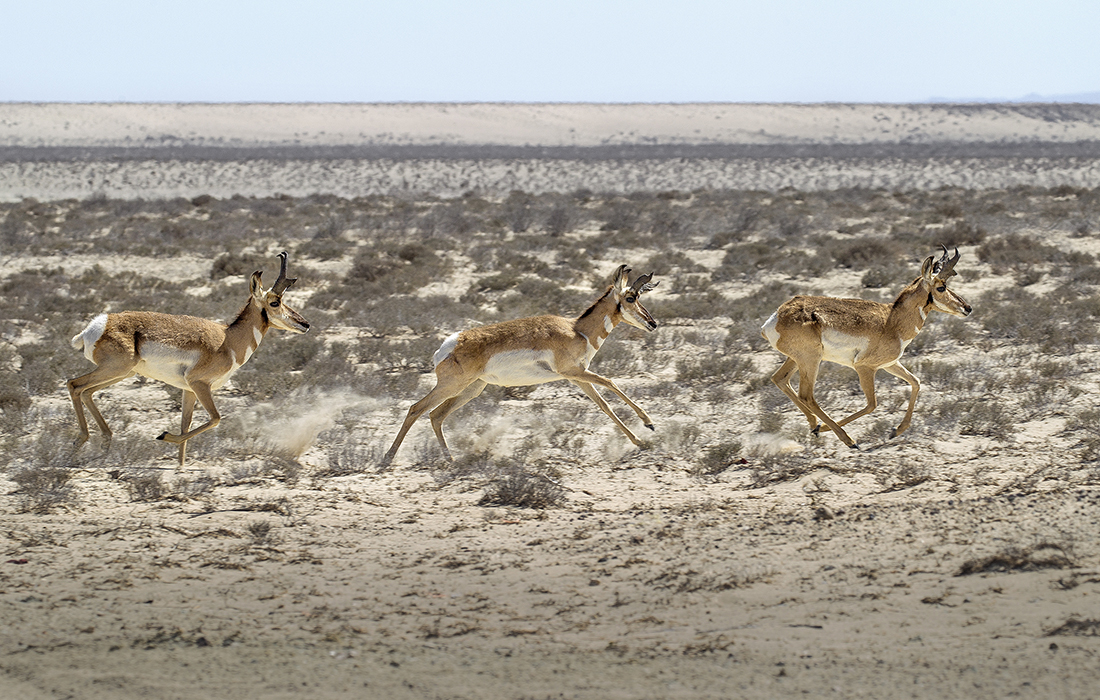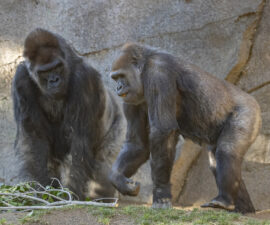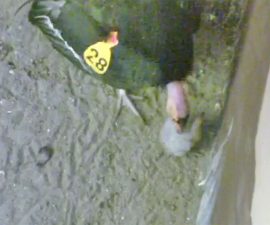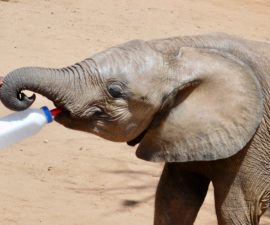BY Peggy Scott
Photography by Tammy Spratt
As the second-fastest land mammal (the cheetah takes first place), the Peninsular pronghorn Antilocapra americana peninsularis can reach speeds of 60 miles per hour. One thing this fleet-footed animal can’t outrun, however, is the threat that habitat fragmentation poses to its existence. Once numbering in the thousands and roaming across the Baja California Peninsula and as far north as Southern California, the Peninsular pronghorn population is now critically endangered. Only 400 to 450 animals live in a range within the El Vizcaino Biosphere Reserve in Baja California Sur, Mexico.
The loss of living space, along with hunting and competition for resources, may seem to have started the extinction clock ticking for the Peninsular pronghorn. But a collaboration of zoological organizations on both sides of the border, the Mexican government, and non-governmental organizations (NGOs) is working on a conservation project that just might buy this enigmatic creature enough time to rebuild its numbers—one adorable fawn at a time.
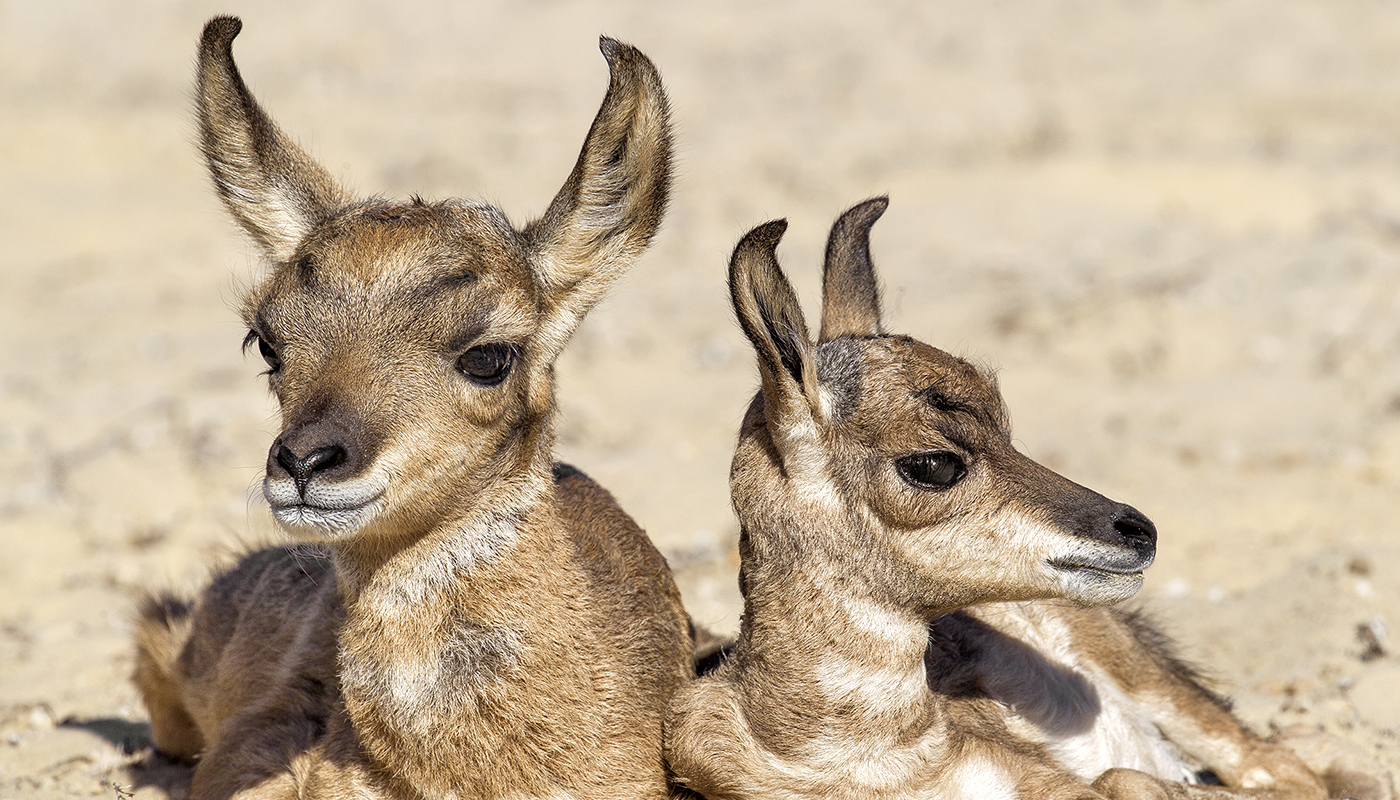
A cooperative efforT
The Peninsular Pronghorn Recovery Project involves the efforts of Mexico’s Espacios Naturales, Los Angeles Zoo, the San Diego Zoo and Safari Park, Disney’s Animal Kingdom in Florida, The Living Desert in Palm Desert, El Paso Zoo, Sedgwick County Zoo in Kansas, and Chapultepec Zoo in Mexico City. The project’s goals include not only protecting the existing Peninsular pronghorn population but also adding to it. When the facility joined the project in 2002, Jeff Holland, curator of mammals at the Los Angeles Zoo, noted that “Essentially, we didn’t want to have all of our eggs in one basket. At that time, there was only a very small population remaining in the wild, and only one zoo with a herd of this subspecies. We felt we should have insurance populations in accredited zoos in the US, in case a disease outbreak affected that one population.” Today, there are seven zoological facilities involved with the housing and breeding of Peninsular pronghorn.
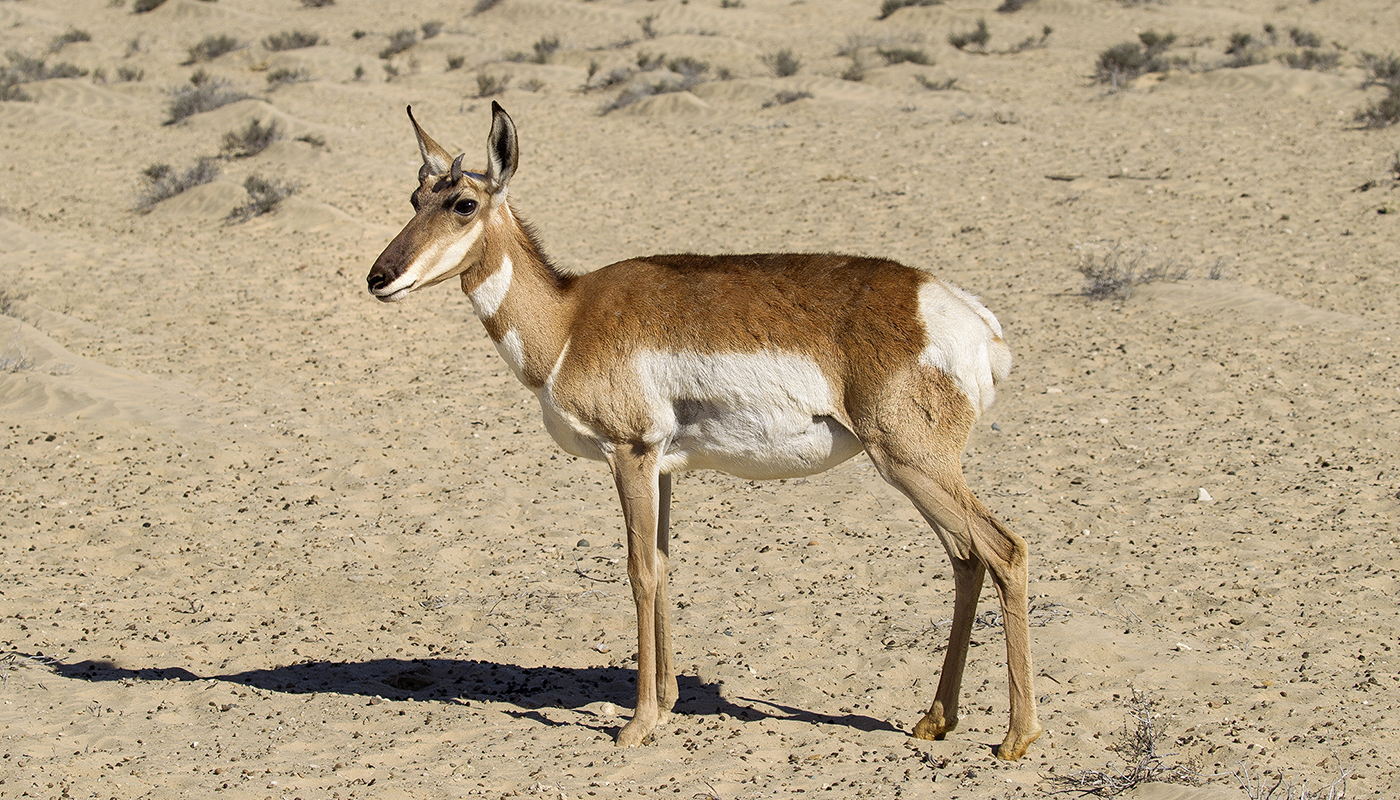
Seeing “Ghosts”
Living in desert and semi-desert conditions, the hardy Peninsular pronghorn is known locally as el berrendo. They survive on shrubs, forbs, broad-leaf weeds, cacti, sagebrush, leaves, and herbs. They drink when water is available, but they can go for weeks without it, obtaining moisture from their food.
Measuring up to 35 inches at the shoulder and weighing up to 125 pounds, these animals sport coats of golden-brown or tan with white markings. Their white underbellies deflect heat from the ground. This coloration helped earn the Peninsular pronghorn its somewhat mystical nickname. “They’re called the ‘ghosts of the desert’ because they blend in so easily with their surroundings,” explains Andy Blue, associate curator of mammals at the San Diego Zoo Safari Park, who joined the project in 2002. “And they’re so fast, they disappear from view very quickly.”
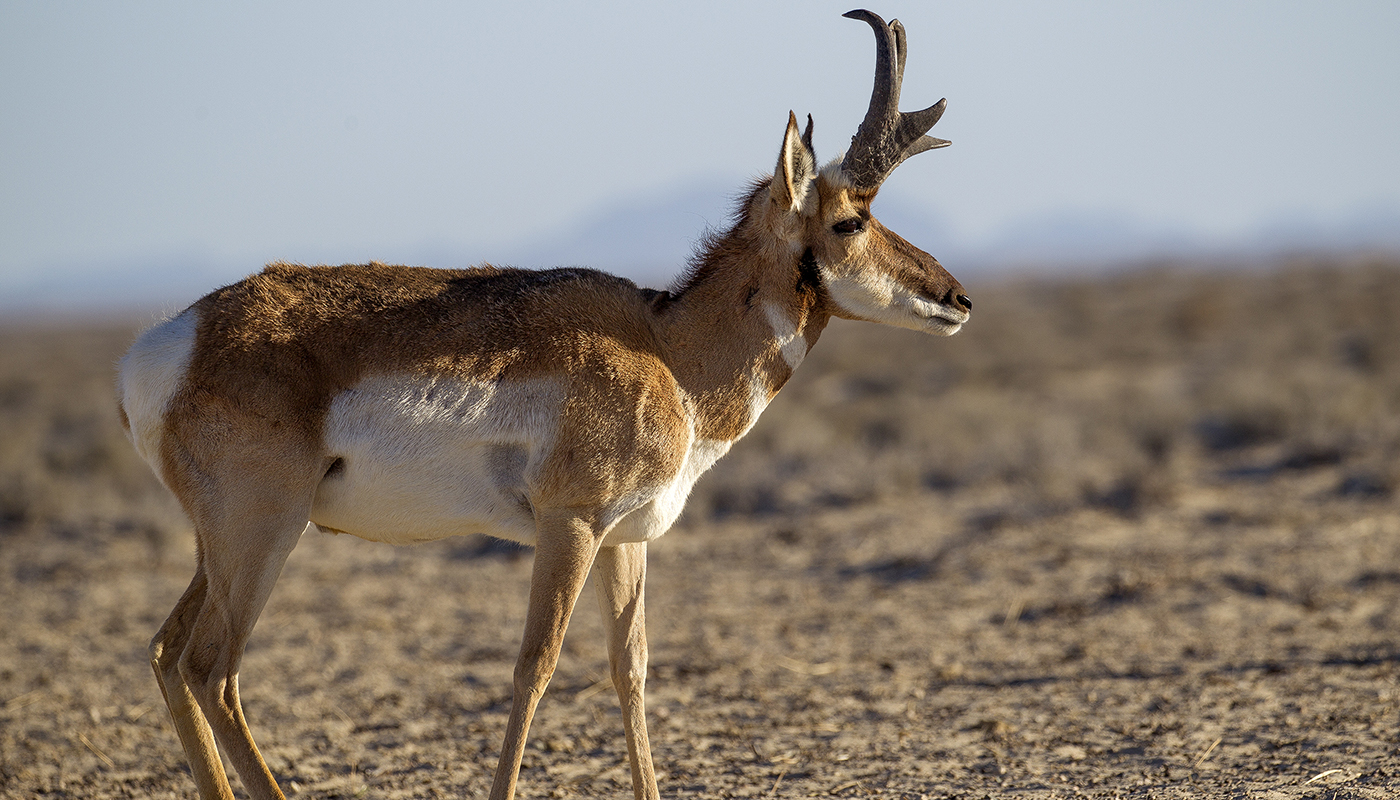
a unique species
Male Peninsular pronghorn are larger and darker than females. The distinctiveness of their horns only adds to the animals’ mystique. They occupy a niche between deer and goats, and they are the only animals with branched horns (not antlers). Their horns’ outer sheaths are shed annually. Females’ horns, if they have them, are spiky and present for two to five years before they shed.
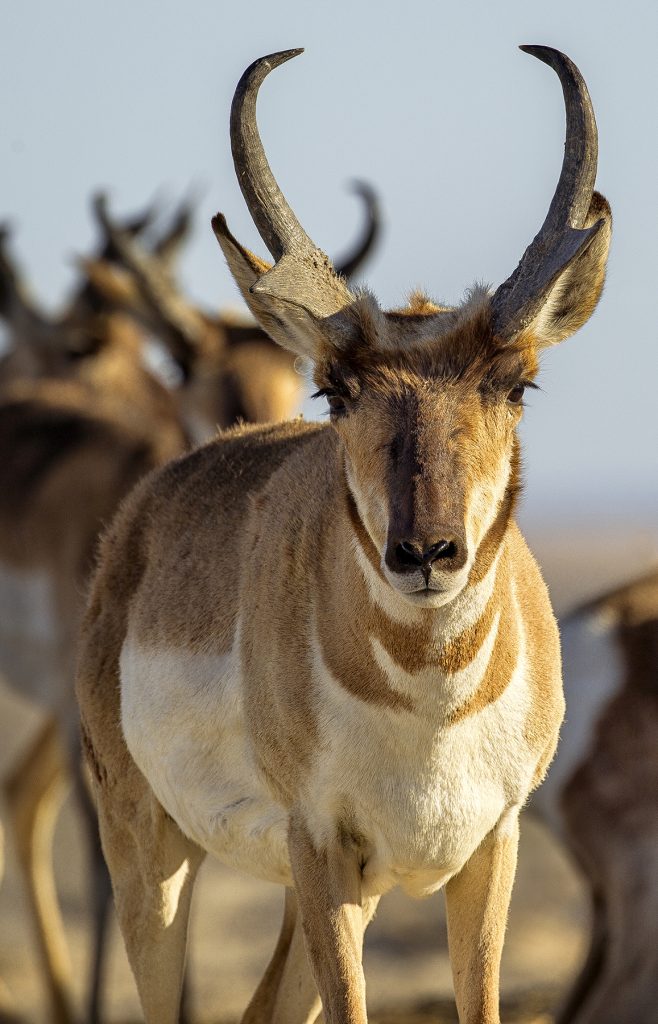
HORN SECTION
Peninsular pronghorn are the only animal with branched horns (not antlers).
Because pronghorn are built for life as potential prey, their pupils constrict to horizontal slits. This maximizes peripheral vision, allowing them a field of view spanning 300 degrees! Pronghorn can see for miles, and they have the largest eyes of any North American hoofed animal their size. The eyes are also high on the sides of the head to watch for predators.
Pronghorn are the only surviving members of the family Antilocapridae, a group of hoofed animals that appeared during the Pleistocene (10,000 to 1.8 million years ago). By contributing supplies, equipment, expertise, and a lot of work, the partners of the conservation project aim to keep that long survival streak going.
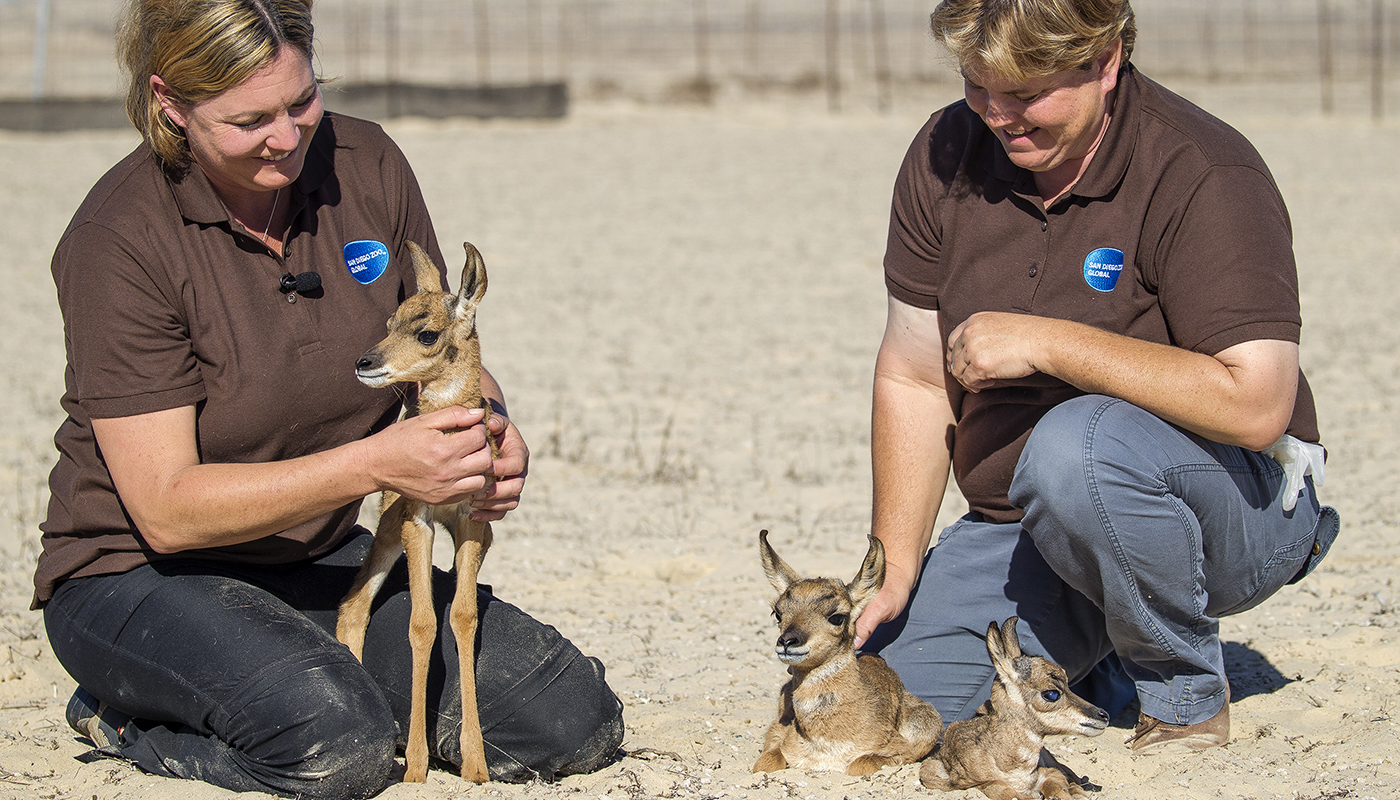
Pronghorn Plans
The Peninsular pronghorn’s range has been decreasing as the human need for land increases. “Fences have gone up to contain livestock and allow them to graze, and this limits the pronghorns’ access to their regular territory,” Andy says. “Protective enclosures have been put up around the groups of pronghorn, so they can be fed and taken care of. We provide a safe environment for them.”
That early protection for the fawns is important, notes Melodi Tayles, a lead keeper at the Safari Park. “At birth, these babies are so small, only five to seven pounds,” says Melodi, who is also the keeper of the Peninsular pronghorn studbook. “When they are born outside of the enclosure, they often don’t survive. They are easy prey for coyotes.”
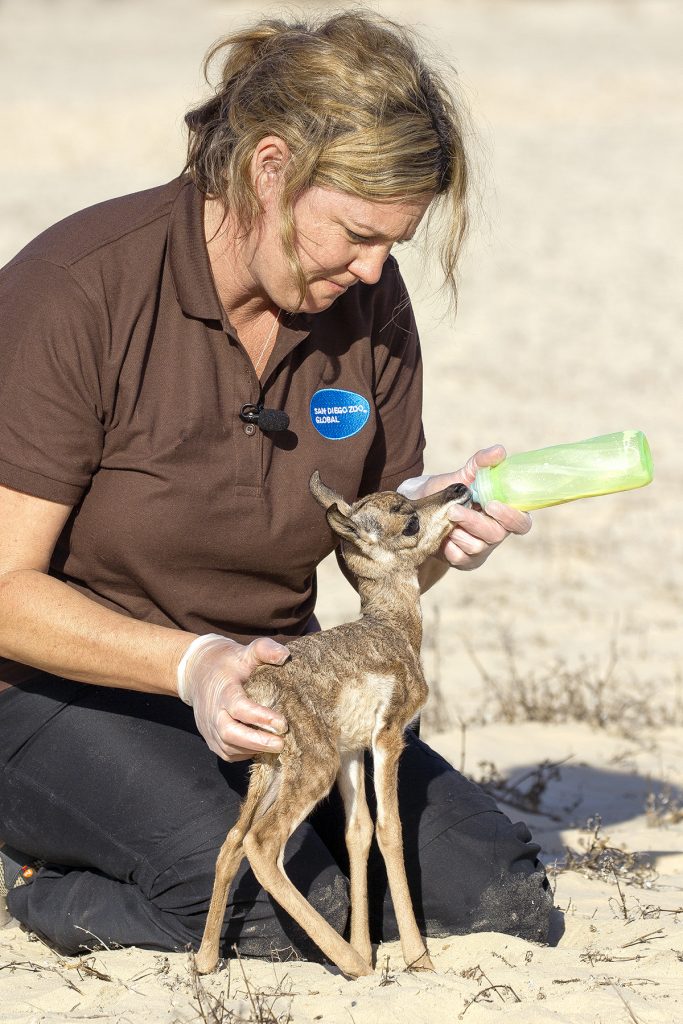
BOTTLE SERVICE
Pictured here: Lissa McCaffree, a lead keeper at the Safari Park, bottle feeds one of the fawns, improving both its chance of survival and tractability. Pictured above: Lissa and fellow lead keeper, Melodi Tayles, give TLC to pronghorn babies.
With the safety of the animals in mind, the teams focused on getting the newest herd members used to being around people. “We have seven teams going to the La Choya region for two-week stints to start the fawns on bottles,” Melodi explains. “These animals can be skittish, and we don’t want them in distress during handling. By bottle-feeding the fawns, they are more comfortable when being brought into managed care when they’re a little older. A couple of calm animals help calm the whole herd.”
Currently, an insurance population of 30 Peninsular pronghorn live in US zoos. Their first stop is the Los Angeles Zoo for quarantine, and then they move on to one of the other project facilities. A small bachelor herd lives at the San Diego Zoo, and it includes one youngster hand raised by Melodi, who notes that progress has been very encouraging. “All the fawns that were brought into managed care in 2011 have reproduced,” she says.
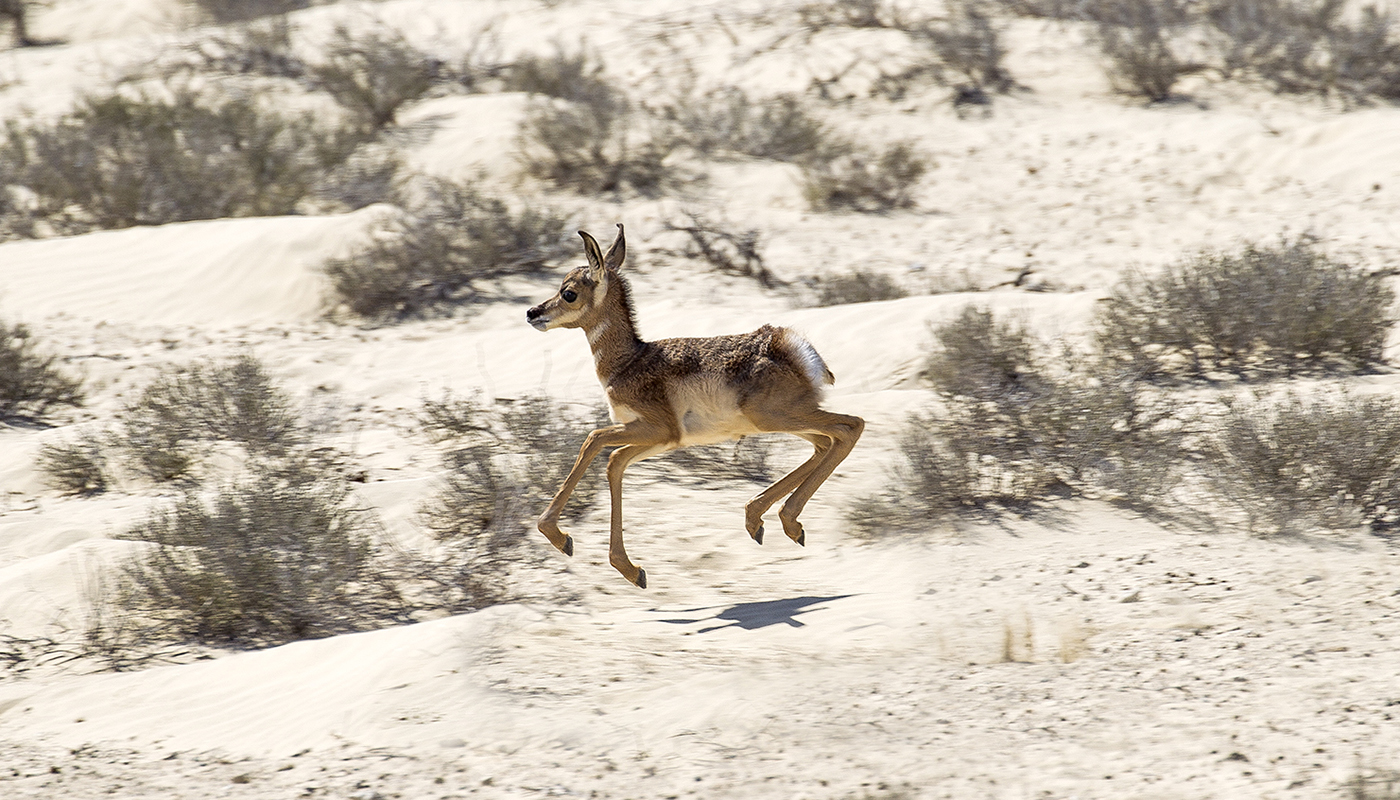
reason for optimism
Not only is Andy optimistic about the future of the Peninsular pronghorn, he says he was impressed with the teamwork involved in the project’s success. “The Mexican government is doing a great job of protecting these pronghorn,” he says. “And a lot of people put a lot of resources into saving them.”
Melodi adds that participating in the project was rewarding on many levels. “This is a great coalition of facilities, giving their time and labor to see these pronghorn thrive,” she says. “When you see the whole picture, and you live in it, it’s something you’ll have with you your whole career.”

